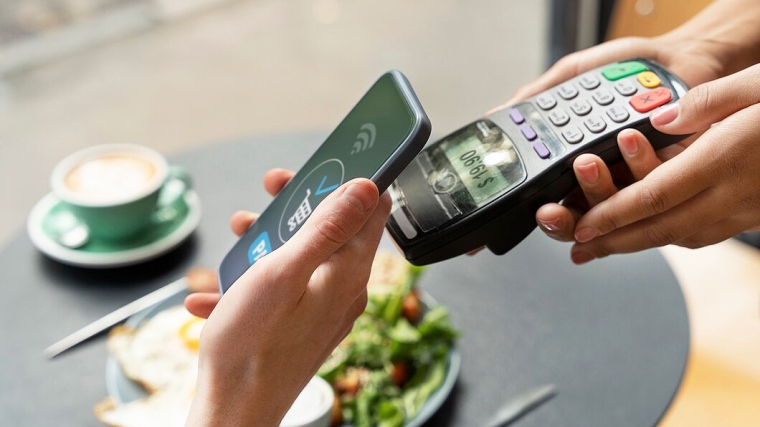
Remember when you were a kid and you had actual money in your hand? Maybe it was pocket money, or money from doing chores. You could see it, feel it, and count it over and over before deciding what to spend it on. The pleasure of receiving something for your hard-earned cash, and the pain of handing over your money to pay for it, happened at the same time. You could assess whether you really wanted the toy based on the feeling you had when you carefully counted out your coins at the counter.
Fast forward to today, and for many of us, money has become almost invisible. We tap a card, swipe a phone, or click a button online — and boom, money is gone. No paper. No coins. No real moment of spending.
And that, my friend, is a problem. We get the pleasure of buying, but the pain of paying for it, is either delayed (thanks credit card), or you just don’t feel it when you swipe.
When we don’t feel our money, we don’t always think about our money — and that’s where things can start to unravel.
Over the last decade, the way we use money has changed dramatically. We’re no longer pulling notes out of our wallet. It started with credit cards and now we're tapping, scanning, direct-debiting, and setting up auto-payments. Buy Now, Pay Later is just another app on our phones.
It’s efficient, it’s easy — and it's dangerously detached. The technical term is the abstraction of money.
Our brains haven’t quite caught up with the convenience. Studies show that we actually experience pain when we part with physical money. It activates the same region in the brain that responds to physical pain. So, handing over a $50 note makes us pause and think. Tapping a card? Not so much.
Just to keep myself in touch with ‘real’ money, every now and then I will get a $50 note. The game is to see how long I can resist spending it. It can sit in my wallet for a couple of weeks, maybe longer, untouched, but as soon as I do that first transaction, and buy something with it (usually at the market where they don’t have EFTPOS), then it doesn’t take long for the rest of that cash to disappear.
It’s this lack of connection to money that means we can spend without truly realising it — until the bank balance says otherwise.
I was chatting to a client recently who was baffled by how much he was spending each week. “I don’t spend much,” he said. “It’s just the odd coffee or lunch out — nothing big!”
We pulled up the bank statement. A coffee here. A snack there. A beer after golf. A quick tap at the chemist. It added up. And fast.
This is the new reality: micro-spending without mindfulness.
When we’re not actively involved in the exchange — when we don’t physically feel the money leaving our hands — we lose the sense of consequence, that’s the pain bit.
And the tap-and-go lifestyle has one more nasty side effect: it makes budgeting a nightmare. Because if you're not tracking every tap (and let’s be honest, most of us aren’t), how can you really know where your money is going?
I’m not here to tell you to abandon technology. I love the ease of online banking and the convenience of digital payments. But what I am saying is this: we need to bring awareness back into the way we spend.
We need to feel our money again — even if it's digital.
Here’s how to start you can start to do that.
1. Track everything for one week
Just one week. Write it all down — every coffee, every online purchase, every little tap. The goal here is awareness, not judgement. You might be surprised at what you learn.
2. Go old-school with your spending money
Another exercise you can try, is take out actual cash for your discretionary spending. Groceries, lunches, coffees, entertainment — whatever you usually spend day to day.
Just be aware, that you might get some backlash from those behind you in the supermarket queue as you pay by cash, it takes a bit longer… yes, this did happen to a friend who tried this exercise.
Give yourself a weekly limit, and once the cash is gone, that’s it. You’ll be amazed at how differently you treat money when you can see it.
Can’t use cash for everything? Try putting your weekly spending money onto a separate card or account that doesn’t allow overdrafts. That way, there’s still a boundary.
3. Use visuals
Some people find it helpful to use an app that shows visuals of money “leaving” — like graphs or digital jars. It might sound silly, but this kind of visual cue can help reconnect your brain to the value of each dollar.
4. Review your subscriptions
Another hidden side-effect of the digital money age? We sign up for things — apps, software, streaming, fitness — and then forget about them after the free week, or month ‘trial’ or auto renewal that happens a year later. Those little monthly payments can add up to hundreds (or more!) each year.
Do a full subscription audit every 6 months. If you’re not using it, cancel it. That money can go to better use — like savings or something you actually value.
This one caught me out during the house build project. I was ‘too busy’ to let the gym know I wouldn’t be able to go for a couple of months, so instead of my membership going on hold, I carried on paying, and of course the project went on quite a bit longer. When I looked at my numbers, I got quite a shock at how much gym I had paid for but not used!
5. Mind the ‘Buy Now, Pay Later’ trap
BNPL can seem like a great solution — but it’s also a great way to commit Future You to expenses you haven’t budgeted for. If you're not tracking these, they can sneak up and hit hard when the payments roll in.
Before you click, pause and ask: “Would I still want this if I had to pay the full amount right now?”
If the answer is no, step away.
We live in a digital world, and that’s not going to change. But our mindset needs to shift with it.
Because money — whether it’s coins in your purse or numbers on a screen — still represents time, energy, effort, and choice.
So let’s choose to engage with it. To stay conscious. To bring feeling back to our finances.
Your bank balance will thank you — and so will your future self.
Start with that one-week challenge: track every dollar, every tap. No shame, no judgement — just curiosity.
Because when money feels real again, it becomes easier to manage, protect, and grow.
And that, my friend, is real financial power.
*Lynda Moore is a Money Mentalist coach and New Zealand’s only certified New Money Story® mentor. Lynda helps you understand why you do the things you do with your money, when we all know we should spend less than we earn. You can contact her here.
7 Comments
'*Lynda Moore is a Money Mentalist coach and New Zealand’s only certified New Money Story® mentor'.
Who or what certifies a 'New Money Story® mentor'?
I have an elderly parent with macular degeneration, another relative with mental health problems.
Increasingly, basic banking, investment & other fundamental functions of society are made inaccessible because there is compltete reliance on digital technologies (eg 2 factor authentication).
As the newer generations age, many without kids to support them, I wonder how they will cope.
You’re raising a really important point. As we move more into digital banking and payments, it’s easy to forget that not everyone can access or manage these systems easily. It’s not just about convenience — it’s about ensuring people can still feel in control of their money, no matter their circumstances. Awareness of these challenges is the first step to creating solutions that work for everyone.
Or you could just continue to use the uncomplicated, reliable, resilient, private, highly personally visible and inclusive thing that cash is, and there's a growing push-back against electronic payments only that solves issues for banks and government only.
https://www.keepcashalive.com/
And how cash access is now legislated in the UK - https://www.which.co.uk/news/article/how-which-campaigned-to-protect-ca…
Thank you for sharing these links and insights. It’s a really important reminder of the value of cash and why keeping it accessible matters.
Experimental gene therapy marketers like Trudeau and Ardern shows why cash is essential for personal freedom. A non cash society is wide open for tyranny.
Global banks have to launder half a trillion of drug cash every year through their banks. They are not going to going to give up that business, nor are the people in power who benefit from that cashflow.
"Likewise, when HSBC, a major international bank, was fined over $1 billion for laundering drug market revenues through its recently acquired Mexican affiliate, it was again the handling of currency that was so striking; Mexican drug dealers had developed cash boxes that fit the specific shape of the teller's windows in the HSBC branches (Taibbi, 2012)."
https://www.sciencedirect.com/science/article/pii/S095539592200072X
Thanks for sharing your perspective and the article. It’s a strong reminder of how important it is to stay aware of the systems we rely on — and why having options, like cash, can make a real difference.

We welcome your comments below. If you are not already registered, please register to comment
Remember we welcome robust, respectful and insightful debate. We don't welcome abusive or defamatory comments and will de-register those repeatedly making such comments. Our current comment policy is here.